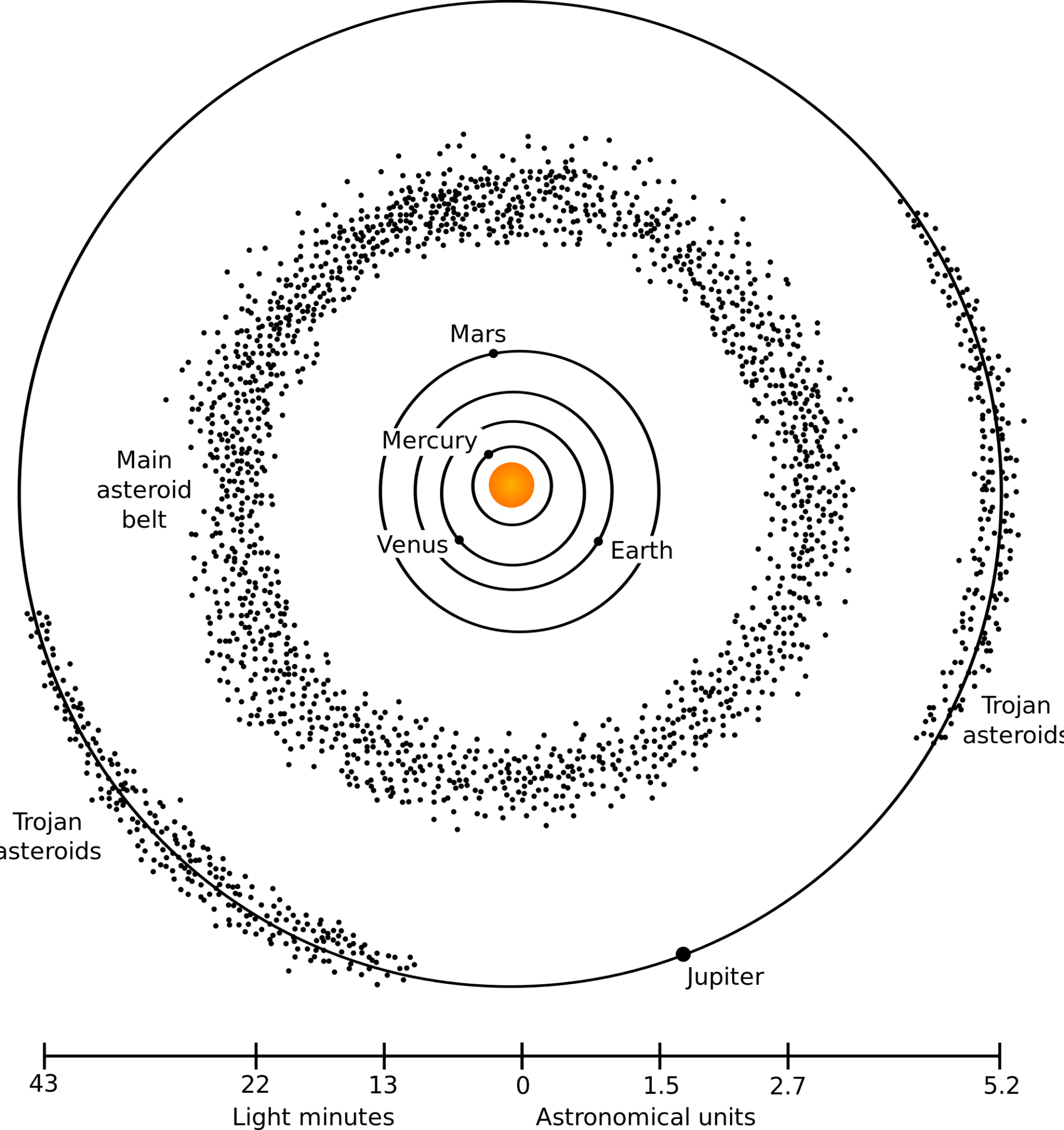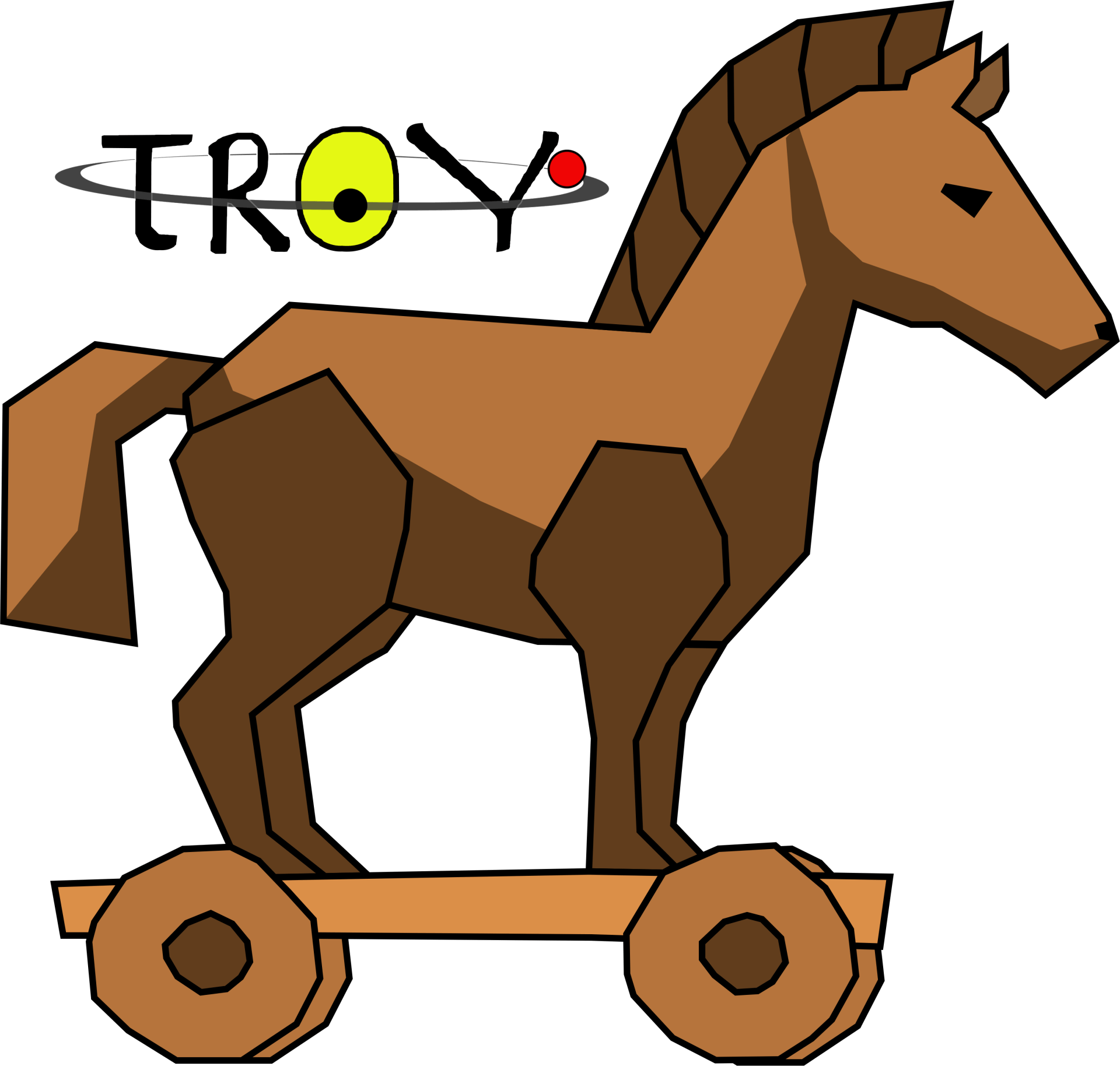Background
What is a trojan body?
Around one hundred years after the publication of the basics of gravitational forces in Principia Mathematica (1687) by Sir Isaac Newton, Joseph-Louis Lagrange studied its implications in the three-body problem. Five stable points in the gravitational field of two massive bodies arose from his calculations. We now call these regions as Lagrange points L1, L2, L3, L4, and L5. The first three are located in the line connecting the two massive bodies, while L4 and L5 form two equilateral triangles with them (see diagram on the right). The latter ones are known to be very stable, so that additional bodies can get trapped in these regions and keep librating in this gravity wells. This "small" bodies co-orbiting with a larger body (usually a planet) around a more massive object (usually a star) are called Trojans. The origin of the name is obvious when we remember the history of the Troy war described in the Iliad of Homero.

Trojans in our Solar System
Examples of this type of configurations are found in our Solar System. The most well-known Trojans are found in Jupiter's L4 and L5 points, but other planets like Venus, Mars, Neptune, Uranus, and our own Earth also host Trojan bodies (see below). Jupiter has the largest amount of trojans known in the Solar System, hosting more than 150000 bodies larger than 1 km in both Lagrangian points L4 and L5, with 624 Hektor being the largest trojan found so far and having a diameter of around 203 km. A much smaller number of trojans has been found in the orbits of Mars and Neptune. In the first case, seven bodies have been confirmed so far, all of them having sizes around 1km or smaller, and most of them librating around L5, i.e., trailing the planet. In the case of Neptune, 12 trojans have been detected so far according to the Minor Planet Center. Their sizes range between 50-200 km.

Interestingly, not only planets but also moons can have their own Trojans, as for instance the case of Telesto and Calipso, located at L4 and L5 points of the Tethys Saturnian moon.
The Earth trojans
In 2011, Connors et al. (2011) detected the first trojan body co-orbiting in Earth's orbit, 2010 TK7. This body has an estimated average diameter of around 300 m. Its orbit around L4 is highly inclined (i=20.9º) and eccentric (e=0.191). Interestingly, Connors et al. (2011) derived that this body jumped from L5 to L4 around 2400 years ago, probably due to its large eccentricity. This L4-L5 transition has also been found in some Jupiter trojans (e.g., Tsiganis et al., 2000).
More recently, other objects have been found to co-orbit with our planet and currently, up to 17 objects are known to inhabit our orbit. However, most of them are located in rather unstable orbits and so will scape from the co-orbital motion in the near future.
The discovery of these co-orbital bodies to the Earth is also interesting because they share the irradiation properties of the Earth. Consequently, depending on their composition, the time that thay have been co-orbiting the Earth in an
More recently, other objects have been found to co-orbit with our planet and currently, up to 17 objects are known to inhabit our orbit. However, most of them are located in rather unstable orbits and so will scape from the co-orbital motion in the near future.
The discovery of these co-orbital bodies to the Earth is also interesting because they share the irradiation properties of the Earth. Consequently, depending on their composition, the time that thay have been co-orbiting the Earth in an
stable orbit and their libration properties, these bodies could be good candidates for fly-by exploratory mission.
While no mission has yet been planned to a trojan asteroid, sending a spacecraft to the Lagrangian points of the Earth could provide many information about the population of bodies in that regiions. It is important to note that L4 and L5 are not visible from the Earth since their visibility just occurs during day time.
Why do we care about trojans in extrasolar systems?
It is clear that trojan bodies are outgrowths of the planet formation process and the subsequent planet migration that we now know is essential to explain the current diversity of the known planet population. Thus, they are tracers of these processes and they must exist in any other outer planetary systems. Detecting them will bring up hidden pieces of the puzzle of planet formation.

Dirección
www.troy-project.com
Newsletter
Para mantenerte informado, puedes suscribirte a nuestra newsletter